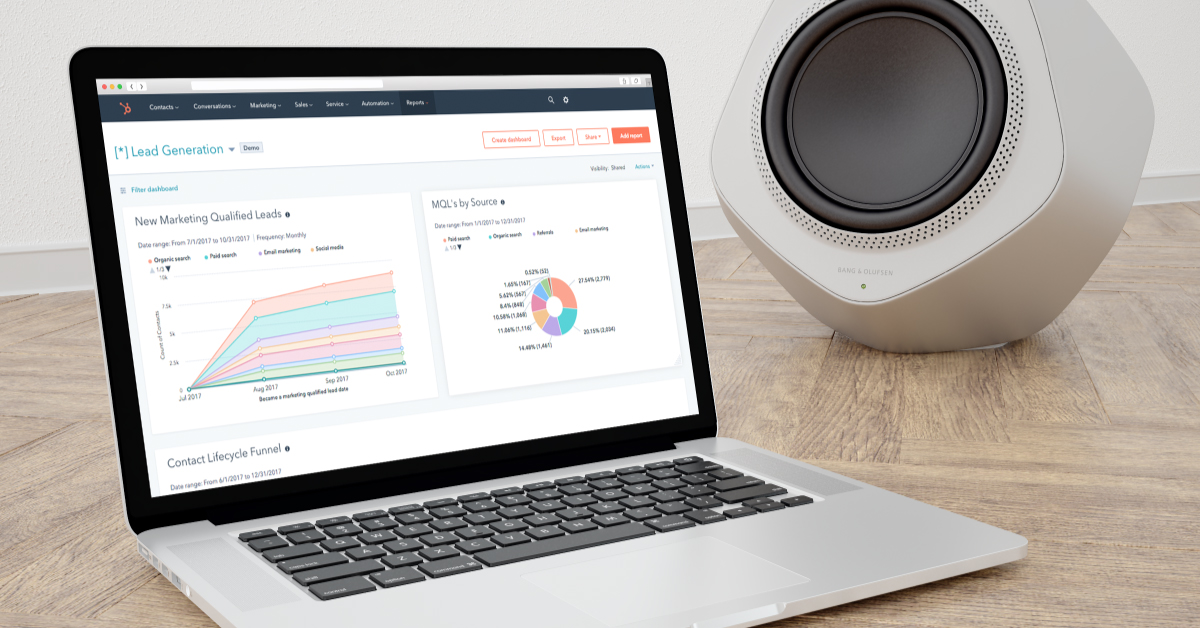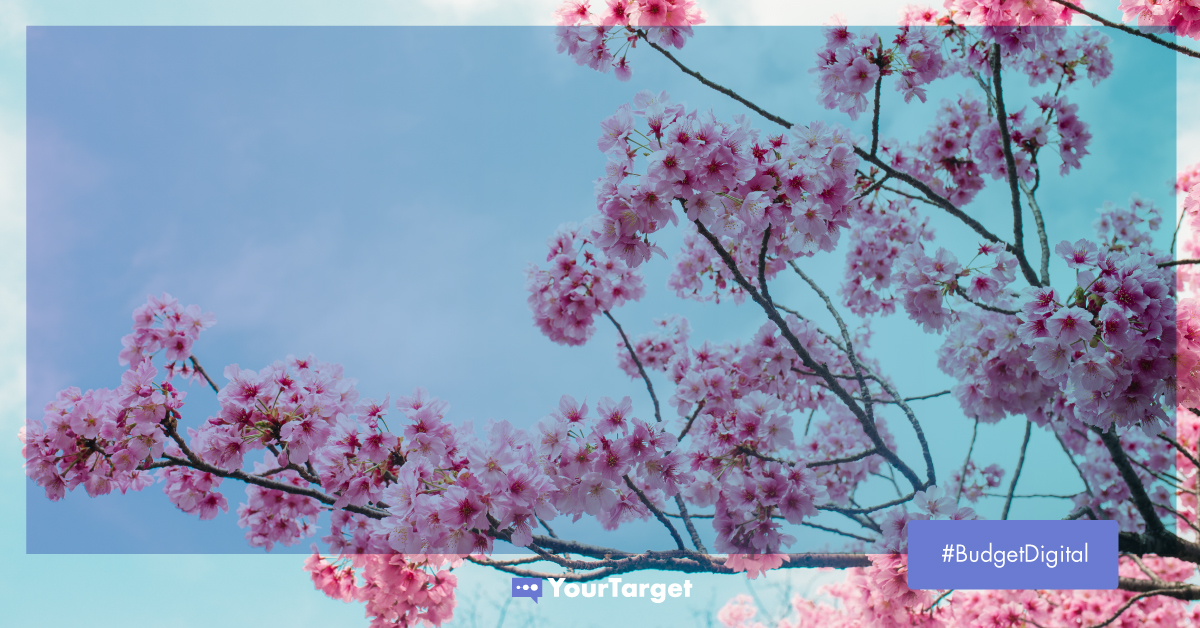Digital marketing is an essential part of running a modern business. If you want to succeed in today’s digital world, you’ll need to know how to properly allocate budget the time and resources you need to execute memorable campaigns that drive results.
It’s estimated that global digital ad spend will reach $389 billion in 2021. From this statistic alone it’s clear to see that digital marketing has a huge impact on the way consumers discover and interact with businesses.
Defining your marketing budget might seem challenging at first. Where should you focus most of your spending? How do you make sure you’re not overspending in areas that aren’t worth it? What will your target audience respond to best?
In this article, we’ll help answer these questions and more by explaining how to define your digital marketing budget in 5 simple steps.
Define Your Digital Marketing Budget in 5 Easy Steps
1. Analyze your past campaigns and results.
Before you get started, a critical part of defining your digital marketing budget involves looking at past strategies that have worked and that haven’t.
Look at your digital marketing results from the last 12 months and do a budget analysis.
What does the data say? Did you execute a social media campaign that resulted in a lot of leads generated? Perhaps you invested some of last year’s budget in SEO and saw a huge increase in organic traffic. Did your paid advertising pay off?
Here are a few things to consider when auditing your past results:
- Channels: Which channels drive the most engagement? Where does your audience hang out? How can you exploit top-performing channels to achieve your marketing goals?
- Past goals: What were your previous digital marketing goals? Did you achieve them? If not, what stopped you from achieving them?
- Tactics: What tactics have you applied to your strategy before? Which ones worked and which didn’t? What ROI did they yield?
Along with analyzing the data from previous campaigns, it’s important to ask other people in your marketing team about their experience. What did they think went well and what do they want to change for next time? This will provide valuable insights that you can leverage to inform future strategies.
Armed with all this information, you’ll have a good idea of where marketing spend was spent well, and where it can be better allocated for next time. Onto step 2.
2. Set SMART goals.
You knew this one was going to come up! Setting SMART goals is an important foundation in any marketing strategy, digital or traditional. Goals are what will give your strategy direction, and coming up with them is a vital part of planning your digital marketing budget.
When outlining your digital marketing plan goals, it’s important to ensure they align with overall business objectives. You should also develop a set of key performance indicators (KPIs) to help measure those goals and keep you on track to success.
Your digital marketing goals should be specific and measurable, relating to different stages of the customer journey. Once you’ve outlined your goals, you’ll be able to appropriately allocate budget, resources, and time to achieve them. Below are some focus areas and example goals to get the ball rolling.
- Increase conversions: Convert 5x more organic leads to paying customers by December 2021.
- Boost organic traffic: Use SEO to increase organic traffic by 20,000 visitors by the end of the month.
- Improve engagement on social channels: Increase social media impressions among the target audience by 20% during the first quarter.
- Reduce bounce rate: Reduce the overall bounce rate by 30% by the end of the financial year.
- Lead acquisition: Acquire 50% more leads by the end of the second quarter.
3. Decide which digital marketing channels to spend on.
Research by Hook found that the top inbound marketing priority in 2020 was on growing SEO and organic presence, followed by content creation for blogs. In 2021, digital trends continue to focus on the impact of SEO (along with the rise of voice search), content marketing, influencer marketing, and video.

More than likely you’ll be dividing your digital marketing budget among various channels and tactics. Once you’ve got an idea of what worked well in the past and your future goals, you can start narrowing down the number of channels and campaigns you want to invest in. Think about:
- SEO: Are you ranking lower than your competitors? Is organic traffic slowing down? It might be time to step up your SEO game.
- Content marketing: Which types of content do your target audience engage with best? Think about consumer trends and how you can create content tailored to your audience’s needs. For instance, do you want to join the 74% of marketers who agree that video has a better ROI than static imagery?
- Social media marketing: Which social media channels do you want to focus your efforts on? Consider whether your audience interacts mostly with Instagram, Facebook, Twitter, etc, and decide which channels drive the most engagement.
- Email marketing: Do you want to nurture customer relationships? Email marketing campaigns are a great way to reach out to customers with valuable, relevant information.
- Local marketing: If you cater to a local audience, it’s a good idea to invest part of your budget in local marketing tactics to ensure you remain on their radar.
- PPC advertising: Want to convert more leads? PPC advertising is a paid advertising strategy that targets leads when they’re ready to convert.
An important part of this process involves conducting a competitor analysis. This allows you to check out the competition, understand what they’re doing successfully, and identify any content gaps in their strategy that you can fill. Once you know which channels you want to invest in, you can start allocating budget allowances to each based on how important they are in helping you achieve your goals.
4. Evaluate marketing software.
Digital marketing software is essential in today’s competitive landscape. Sure, you could use a host of different software services for various functionalities, but there’s an easier way.
Hubspot marketing software is the ideal platform for automating your marketing efforts to increase productivity and efficiency. It’s available on different plans to suit the budget of small businesses and large enterprises.

Hubspot Marketing Hub streamlines inbound marketing processes like SEO, blog creation, social media, video marketing, paid advertising management, and more. If you want to execute and track campaigns in the most efficient way possible, we’d highly recommend investing in Marketing Hub!
Of course, there’s an endless amount of marketing software options out there. Consider which ones you’ll need to budget to ensure your campaigns run as smoothly as possible. For instance, if you’re focusing on improving SEO, you’ll want to invest in excellent keyword research and tracking tools to drive results.
5. Allocate your budget.
Now that you’ve established your goals and identified the areas you want to invest in, it’s time to allocate your budget. There are some industry trends you can use as a baseline for budget allocation.
- Typically, your total marketing budget should account for between 5% and 15% of your total business revenue.
- Digital marketing requires a substantial part of your total marketing budget. Digital is the present and future of marketing as it’s more cost-effective and direct than traditional marketing methods.
Next, you’ll need to determine who’s required to execute your digital campaigns.
Do you want to let your in-house team handle everything? You’ll need to ensure they’re equipped with all the skills and tools they need to effectively do so.
Do you want to outsource content creation to freelancers who understand the industry and have the writing or design skills necessary? If so, you’ll need to consider the rates they charge and whether those rates will include any software costs.
Do you want to outsource completely to a digital marketing agency? You’ll usually pay every month, but they’ll take care of everything for you.
Remember, you can retain some flexibility when it comes to your marketing budget. Don’t put all of your eggs in one basket, so to say. This way, if you find something is working well you can always put more of your budget towards that area of the campaign. You can never plan for the success of a campaign, so it’s critical to keep things flexible as you see how your audience responds.
We’ll leave you with three pieces of advice when it comes to executing digital campaigns that yield great results.
-
- Be consistent: Ensure your brand’s core message is inherent in all the campaigns you create.
- Quality over quantity: Remember that paying for quality is a good investment. The content you produce and share is a reflection of your brand and its values—so make sure to prioritize quality over quantity.
- Tailor everything to your target audience: Understanding your audience is the key to any successful digital campaign strategy. This will also ensure you’re sharing the right kind of content, at the right time, and in the right place.
That’s it! Now you’re ready to start defining your digital marketing budget for 2021 and beyond. Good luck!
Want some more help defining your digital marketing budget?
We can help! Get in touch and book a free consultation today.

